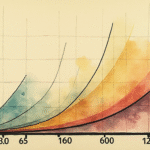Introduction to León XIV and His Connection to Chiclayo
When the white smoke rose over the Sistine Chapel and the world learned of Pope León XIV, many rushed to find out who this new Pontiff was. However, for the faithful in Chiclayo, Peru, there was no need to search; they already knew him well. For nearly twenty years, Robert Francis Prevost lived and served among them as an Augustinian missionary, parish priest, bishop, and friend. It was in this warm, northern Peruvian land that the pastoral character of the man now guiding the Universal Church was shaped.
Cherished Memories of Bishop Prevost in Chiclayo
One of the most cherished images in the hearts of Chiclayanos is that of a bishop unafraid to walk under the scorching sun to visit remote, neglected communities. His visits were not formal; he carried his Bible, sometimes a guitar, and always a simple smile that transcended language and hierarchy barriers. In the Oyotún district, for example, it is recounted how he personally helped rebuild the local chapel after a heavy rain. “He didn’t come to bless the stones; he came to help us carry bricks,” recall the area’s farmers.
Active Listening and Empathy
Another hallmark of Prevost was his listening ability. As bishop of Chiclayo, he dedicated Mondays exclusively to personally attend anyone who wished to speak with him. It didn’t matter if it was a confused young person, a worried mother, or a priest in crisis. His office was a space of comfort and dialogue. A religious sister who worked near him recalled, “He didn’t give quick answers. He took the time to get to know you, pray with you, and walk with you.”
A Renewer with Sensitivity
Beyond pastoral gestures, Prevost also demonstrated sensitivity as a reformer. In Chiclayo, he championed clergy formation, prioritized youth pastoral care, and promoted encounter spaces between urban and rural communities. His love for justice wasn’t abstract; in 2007, when a rural community faced threats from economic interests attempting to seize their land, Prevost publicly supported them without hesitation. He did so not from an ideology but from the Gospel, stating, “The Church cannot remain silent when human dignity is at stake.”
Humor, Humility, and Accessibility
Prevost was also known for his sense of humor and humility. Often seen cycling through Chiclayo’s streets without an escort, he maintained a direct, approachable style devoid of pretense. In one instance, when a woman recognized him and ran to kiss his episcopal ring, he laughed and said, “Save that affection for your grandchild. I’m content with a hug.” This straightforward, unpretentious style is the same one he displayed upon first appearing as Pope: no cape, no grand gestures, only a serene blessing that seemed to say, “I am here to serve.”
Key Questions and Answers
- Who is Pope León XIV? Born Robert Francis Prevost, he served as a missionary and bishop in Chiclayo, Peru, for nearly two decades before becoming Pope.
- What shaped his pastoral character? His time in Chiclayo, where he lived among the people, visited remote communities, listened actively, and championed justice, significantly shaped his pastoral character.
- Why is he known for his accessibility? Prevost was recognized for his humility, sense of humor, and willingness to engage with people on a personal level, often cycling through Chiclayo’s streets without an escort.
- What does his name, León XIV, signify? While some interpret it as a reference to doctrinal strength and clarity, those who knew him in Chiclayo understand it also honors St. Leon the Great and symbolizes his gentle courage in a land where the Church doesn’t always have all the answers but can offer closeness, mercy, and truth.
A Pontificate Rooted in Chiclayo
As Pope León XIV assumes the highest responsibility in the Church, he carries within him the dust of northern Peru’s paths, the warmth of Chiclayo’s squares, and the echoes of simple voices that unknowingly shaped a Pope. His pontificate begins with a silent promise: one that does not forget its peripheries, for it was there he found his soul.






